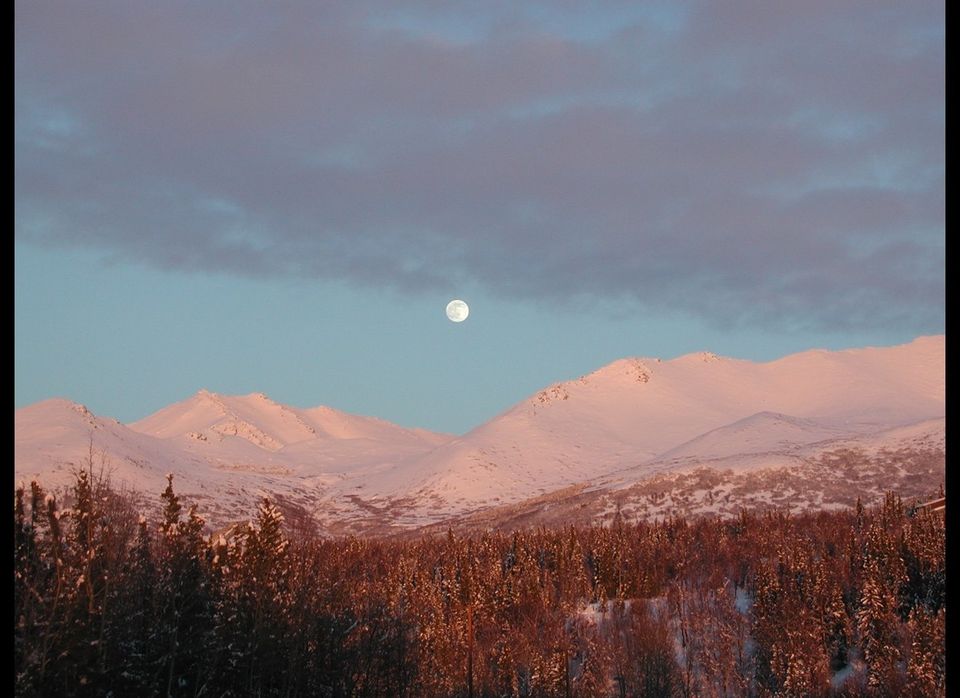On the first weekend in March, extreme sports fans from around the world descended upon the city of Anchorage, Alaska for the Iditarod Trail Sled Dog Race. Also known as The Last Great Race on Earth, this year's race was Saturday, March 2 with a ceremonial start from downtown Anchorage. The actual race started a day later on March 3 in Willow Lake, about 40 miles north of Anchorage.
The first Iditarod was in 1973 and included 34 teams. For this year's 41st anniversary, there were 66 mushers, including 53 veterans, 13 rookies and 16 women. Entrants hail from seven states and seven countries and will by traveling a distance of approximately 998 miles on the Southern Route, which crosses two mountain ranges and runs along the Yukon River and over the frozen Norton Sound. The teams average 15 dogs, with more than 1,000 dogs at the starting line ithis year. There were 26 checkpoints along the way, including the start and finish in Anchorage and Nome. The Iditarod traditionally pays the highest purse in sled dog racing, with the this year's purse of $600,000 going to the first 30 finishers.
I made my Iditarod debut in 2004, flying Alaska Airlines from Seattle direct to Anchorage. I was invited by the Alaska Travel Industry Association to be an IditaRider for the ceremonial start in Anchorage. Simply put, I'd be traveling with my musher Mark Moderow during the first 11 miles of the ceremonial start from downtown Anchorage to the Campbell Airstrip. The majority of the other 86 IditaRiders captured the coveted sled spots in an online auction (bidding begins at $500), with the proceeds going toward the racers' purse. Among the celebrity IditaRiders over the years have been comedian Joan Rivers, actress Susan Lucci and Olympic Gold Medalist skater Dorothy Hamill.
The ceremonial start at 4th and D in downtown Anchorage was jammed with trucks, yelping dogs, anxious mushers, officials and volunteers. A fence separated the participants from the spectators, who were all anxious for the race to begin. The mushers are the rock stars of this winter show, passing out personalized musher cards and signing ski parkas and even blue jeans. As an IditaRider, I had the simple task of being bundled up in a mummy bag with built-in arms and legs and tucked into my musher's sled. Moderow took his spot at the back of the sled, and his team of 16 dogs were rarin' to go. I recalled the advice the IditaRiders were given the day before: "Get in, sit down, hold on and enjoy the show!"
And oh, what a show, with people waving and screaming at us as we sailed by. The cheering fans along the route were sitting in lawn chairs, huddled around bonfires and barbecues and enjoying their late morning winter picnics. Small kids yelled out, "Bootie! Bootie!" in hopes of catching one of the used booties the dogs wear to protect their paws from blisters. People tossed us bags of cookies, and there was even a "muffin lady" along the route, who shows up every year with her goodies. Nearly an hour later, we arrived at our destination. My ride was over, but not my musher's.
The official start of the Iditarod that year was Wasilla (yes, Sarah Palin's hometown), but it has since been relocated to Willow Lake. I recall standing along the sidelines for the 2 p.m. start on that Sunday afternoon, waiting for Moderow to pass by. Finally, No. 31 was announced, and there he was. "Good luck!" I screamed out, and my musher was off. The next day, I took an Alaska Air Taxi ski plane from Anchorage to Finger Lake, one of 26 checkpoints along the Iditarod Trail. The hour-long flight took us into the heart of the Alaska Range, and I spotted three teams of sled dogs looking like moving streams of ants on the carpet of snow below. After landing on the frozen airstrip, I hiked into Winterlake Lodge, a year-round resort accessible only by float or ski plane. Spread out in the snow in front of the lodge was a sea of dogs and mushers, lined up in rows. I checked in with my musher Moderow, who was a bit tired from lack of sleep, but philosophical about how he was doing. "It's just a dog race," he said. I don't think so.
Race Results: Mitch Seavey of Seward, Alaska won the 2004 Iditarod on his 11th attempt. He finished in 9 days, 12 hours, 20 minutes and 22 seconds. My musher, Mark Moderow, finished 61st with a time of 12 days, 13 hours, 34 minutes and 4 seconds.
